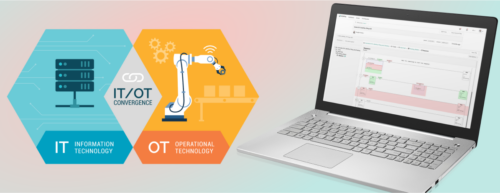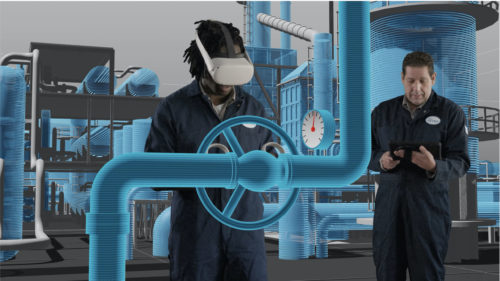Digital trends are transforming industrial landscape
The shift from Industry 4.0 to Industry 5.0 is already happening, and the emphasis on digital technologies and concepts are driving this change. See six growth opportunities for manufacturers.
Digital trends and Industry 4.0 insights
- Manufacturing is already shifting from Industry 4.0 to Industry 5.0 and digital trends and transformation are playing a key role.
- The digital industrial era is about connectivity, data and analytics, which are playing a key role now and will so in the future. The difference is the focus will be less on the machine and more on the consumer.
Digital transformation is an important aspect of manufacturing’s future because of how it can help engineers make better decisions. The digital industrial era is happening, and manufacturers have specific growth opportunities available, said, Prem Shanmugam, VP and global practice area leader at Frost & Sullivan in his presentation “Digital industrial mega trends are transforming the industrial landscape” at Honeywell Connect in Orlando.
“All the technologies that enable Industry 4.0 enable a data-driven business,” he said.
The digital industrial era comprises of three phases:
-
Phase 1: Connectivity of things – Industrial automation and operational technology (OT) players. This is where users focus on cloud adoption, and Internet of Things (IoT) connectivity.
-
Phase 2: Data operations – The rise of IoT-native startups. Shanmugam said this is where cybersecurity and artificial intelligence/machine learning (AI/ML) are digital enablers and protect/augment the systems.
-
Phase 3: Industrial analytics – Hyperscalers’ involvement in manufacturing in manufacturing and proliferation of M&A’s and partnerships. Digital twins, edge computing and augmented reality/virtual reality (AR/VR) play a key role here.
“Digital technologies supplement and help augment the lack of available talent,” Shanmugam said.

Prem Shanmugam, VP and global practice area leader at Frost & Sullivan in his presentation “Digital industrial mega trends are transforming the industrial landscape” at Honeywell Connect in Orlando. Courtesy: Chris Vavra, CFE Media and Technology
Digital transformation use cases, six trends
There is a lack of talent, no question, but for those learning the ropes, there needs to be a frame of reference so they can be guided toward success. New digital solutions can help enable significant improvements in manufacturing use-case performance and business outcomes. Applications based on deeper data-centric interactions among devices, systems and people will be the source of more dynamic value streams.
There are six digital industrial market trends companies need to be aware of as they make the shift toward the new era of manufacturing:
-
Innovative business models
-
Value shift from hardware to software
-
Sustainability focus
-
Talent-related challenges
-
Competitive landscape
-
Macroeconomic context.
These trends have had a side effect where companies are doing more mergers and acquisitions and developing partnerships with third parties, Shanmugam said. If companies don’t have the right people, they need to find those who can bridge the gap because of the labor gap many companies face.
Shift toward Industry 5.0, six growth opportunities
Manufacturing has been in an evolutionary phase over the last decade, going from Industry 3.0, which was more proprietary and did not provide real-time analytics to users, to Industry 4.0. The key difference between the two was the rise of the internet and using the internet to connect devices to provide users with more information quickly. Even though many companies are getting used to the new normal, a shift toward a better, more advanced manufacturing work is already happening.
“The market is moving from Industry 4.0 to Industry 5.0. The shift is toward the customer experience and expectations,” Shanmugam said.
With that shift, the manufacturing industry will be able to connect assets with embedded intelligence and deliver secure connectivity to the cloud while giving the user a unique product with real-time analytics.

There are six growth opportunities for manufacturers: Proactive maintenance, IT/OT convergence, edge/cloud computing, sustainability, software-as-a-service and strategic partnerships. Courtesy: Chris Vavra, CFE Media and Technology
Achieving this growth, however, requires manufacturers to adjust to the rapid changes and take charge. Shanmugam said they can achieve this by adopting six growth opportunities:
-
Develop a proactive maintenance approach for the company. Companies need to get out of the reactive maintenance mindset, he said, and get in front and identify issues because they cause downtime.
-
Invest in information technology/operational technology (IT/OT) convergence.
-
Leverage hybrid edge/cloud computing.
-
Focus on sustainability initiatives.
-
Create software-as-a-service (SaaS) and outcome-based business models.
-
Develop strategic partnerships with companies and organizations that align with your business model and approach.
Chris Vavra is web content manager, Control Engineering, CFE Media and Technology, cvavra@cfemedia.com.
Do you have experience and expertise with the topics mentioned in this content? You should consider contributing to our CFE Media editorial team and getting the recognition you and your company deserve. Click here to start this process.







